
Project Sanjeevani
Transforming Green Spaces into Sources of Health
“In a beautiful, green village called Haripur, there lived an old herbalist named Maya. Everyone knew Maya because she knew a lot about herbs and how they could help heal people. Her house was full of jars and bundles of herbs, each one special in its own way.
One day, a young boy in the village named Aarav got very sick with a fever. No doctor could help him get better. His family was very worried, so they went to Maya for help, hoping she could use her knowledge of herbs to cure him. Maya listened carefully, her eyes shining with kindness, and then she went out into nature with her basket just as the sun was coming up.
When she came back, she had ginger, peppermint, and Echinacea with her. She knew these herbs could help Aarav. Ginger could warm him up and fight the infection, peppermint would calm his stomach and help with the fever, and Echinacea could make his immune system stronger. Maya made a special tea with these herbs and gave it to Aarav.
To everyone’s surprise, Aarav started to feel better the very next day. He got stronger and stronger until he was back playing outside, laughing and running around. Everyone was amazed and thankful for Maya’s wisdom.
The story of how Aarav got better spread throughout the village, and it reminded everyone how amazing and powerful nature can be. Maya showed them that herbs can do incredible things for our health. From then on, the people in Haripur would go to Maya whenever they felt sick, learning more about the herbs and how to live in harmony with nature”
DEEKSHA deeply respects nature and the old knowledge it offers. Inspired by stories about preserving nature, we started PROJECT SANJEEVANI. This project honours the tradition of using herbal plants and natural remedies in everyday life and medicine. It connects old wisdom with today’s lifestyles. Our goal is to remind everyone of the value of our herbal heritage, keeping it alive and relevant in our busy world.
Long ago, people relied on nature for healing, using sacred herbs like Tulsi (Holy Basil), Mint (Pudina), Ashwagandha, Aloe Vera, and Neem. These plants were valued for their healing powers and were part of daily health routines. PROJECT SANJEEVANI celebrates this history, aiming to share and keep this knowledge of herbs alive for future generations.
PROJECT SANJEEVANI plans to create Herbal Gardens, more than just plant collections. These gardens will be ecosystems for learning about nature’s healing powers. We have several goals for these gardens:
– Educational Havens: These gardens will be interactive places where people can learn about medicinal herbs, from planting to using them. We want to help people of all ages understand and appreciate herbal medicine.
– Conservatories of Biodiversity: By growing a wide range of medicinal plants, we celebrate and protect our plant heritage, helping to keep rare and valuable species alive.
– Sources of Health and Wellness: We encourage everyone to use herbal remedies in their daily lives. This supports a natural, sustainable way of taking care of oneself, reducing dependence on chemical medicines.
– Beacons of Sustainable Health: These gardens symbolize our commitment to living sustainably and healthily. We promote practices that are good for both our health and the environment.
PROJECT SANJEEVANI is more than a project; it’s a movement towards valuing health, heritage, and living in harmony with nature. We aim to create Herbal Gardens as symbols of hope, healing, and heritage. Join us in this effort to spread health and sustainability, leaving a positive mark on the earth for future generations.
As we embark on this green journey, we invite you to join this transformative movement. Whether you’re interested in natural health, an educational institution wanting to add green spaces, or a community looking to improve its environment and health, there’s a role for you in PROJECT SANJEEVANI.
Together, let’s sow the seeds of health and sustainability, cultivating Herbal Gardens that will stand as beacons of hope and healing for generations to come.
Our Initiatives
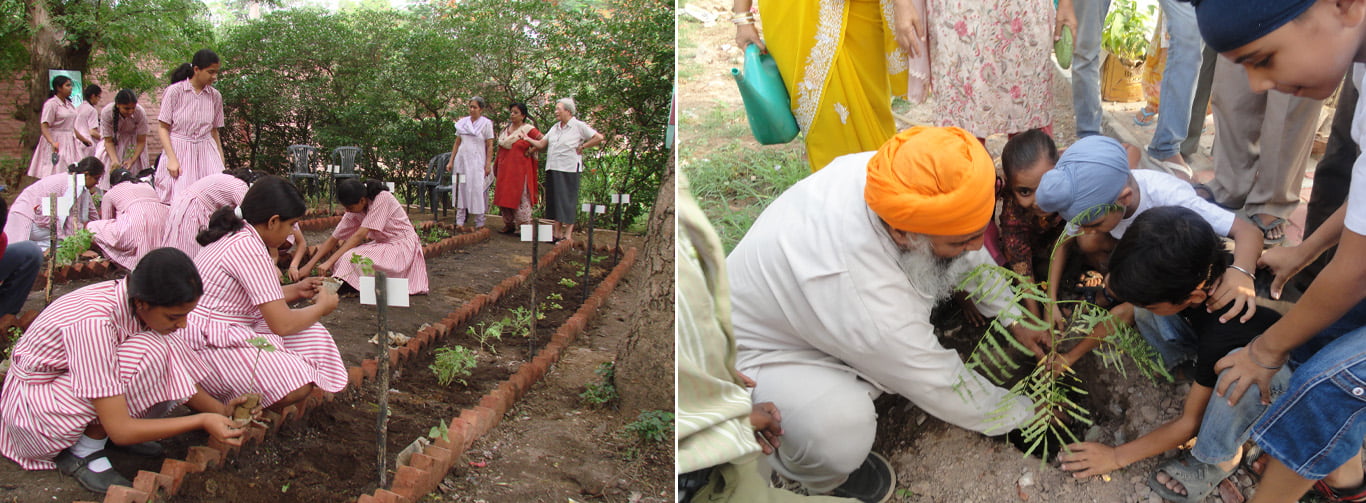
Herbal Garden
To date, we have successfully established 456 Herbal Gardens across a diverse range of educational institutions, residential communities, and other organizations throughout the country. Our primary goal with this initiative is to impart comprehensive knowledge about a variety of herbal and medicinal plants, including their propagation, utilization, and maintenance. We are passionate about fostering a sense of responsibility and connection between individuals and these plants. To this end, we encourage everyone to take personal responsibility for a plant, thoroughly understand its characteristics and benefits, and then share this valuable knowledge with others. This approach not only enhances awareness of the importance of these plants but also promotes a culture of learning and sharing within communities, contributing to a healthier, more sustainable environment.
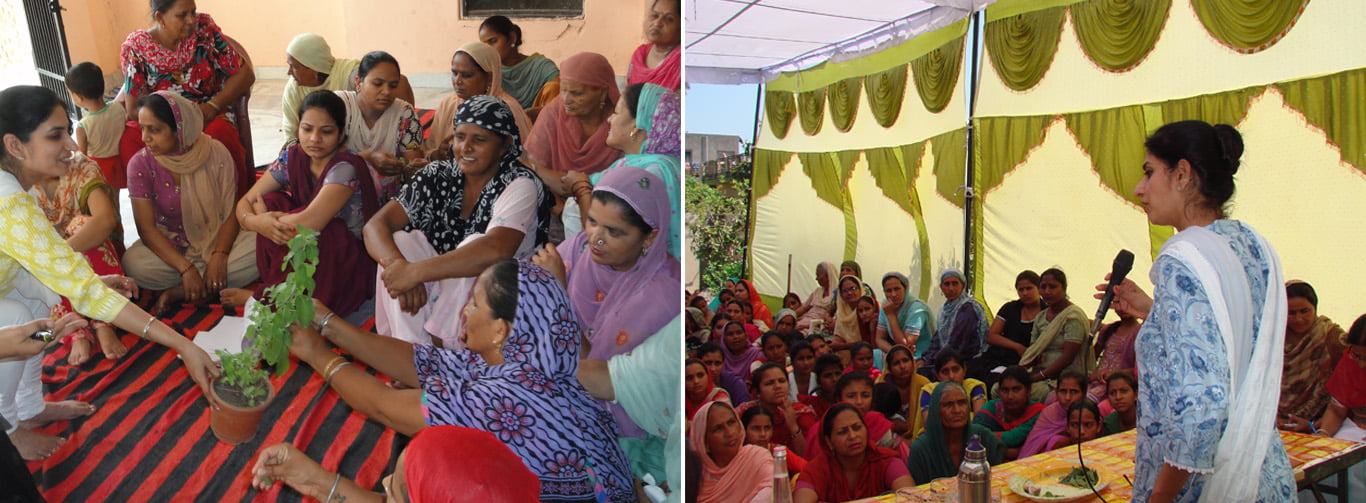
Medicinal Plants in Rural Area
Our project, aimed at encouraging the use of medicinal plants and herbs as home remedies among rural women in Punjab, got tremendous support from the Department of Science and Technology, Government of India, with help from the Punjab State Council for Science and Technology, Chandigarh. We directed our efforts towards the village of Tira in the Mohali District of Punjab, where the local community welcomed us wholeheartedly, playing a crucial role in the success of our initiative.
A significant contribution came from Mr. Avtar Singh, a kind-hearted villager who donated his land for setting up a key herbal nursery. This act was fundamental in our mission to educate and involve the villagers, many of whom were not very literate and were new to modern ways of communication and learning. To make things easier, we used audio-visual aids, making the learning process more engaging and allowing for an interactive atmosphere where everyone felt comfortable to ask questions and express their curiosity.
Furthermore, we arranged for practical demonstrations using potted plants, enabling the villagers to get a close look and learn about the wide variety of medicinal plants. Ms. Deepti, an active member from the Tira community, took on a significant role as the main facilitator in setting up the herbal garden. Her dedication and zeal were key in spreading awareness and motivating the use of medicinal plants among the village women. Through a two-week training session, she acquired detailed knowledge about different medicinal plants and their uses, becoming an essential part of our project’s success and our larger aim of promoting natural health remedies within the community..
Herbal Garden from Wasteland
DEEKSHA teamed up with the Sat Krishna Charitable Trust in Village Narsingpur, Gurugram, to transform a big piece of unused land into a beautiful Herbal and Utility Garden. First, we cleaned up the place really well, removing rubbish, making the ground even, and getting rid of unwanted weeds and bushes. Then, we carefully set up the area with 25 different sections for planting, each for a different kind of herbal plant variety.
The Sat Krishna Charitable Trust, thereafter, took on the responsibility of looking after the garden. In just four months, all our hard work paid off, and we had a lovely, full-grown herbal garden. This garden became a special place for the people living nearby, who found the plants useful in many ways. Everyone in the community have appreciated our efforts and thanked us for it, showing that when we all work together to take care of our environment, we can make a big, positive difference.
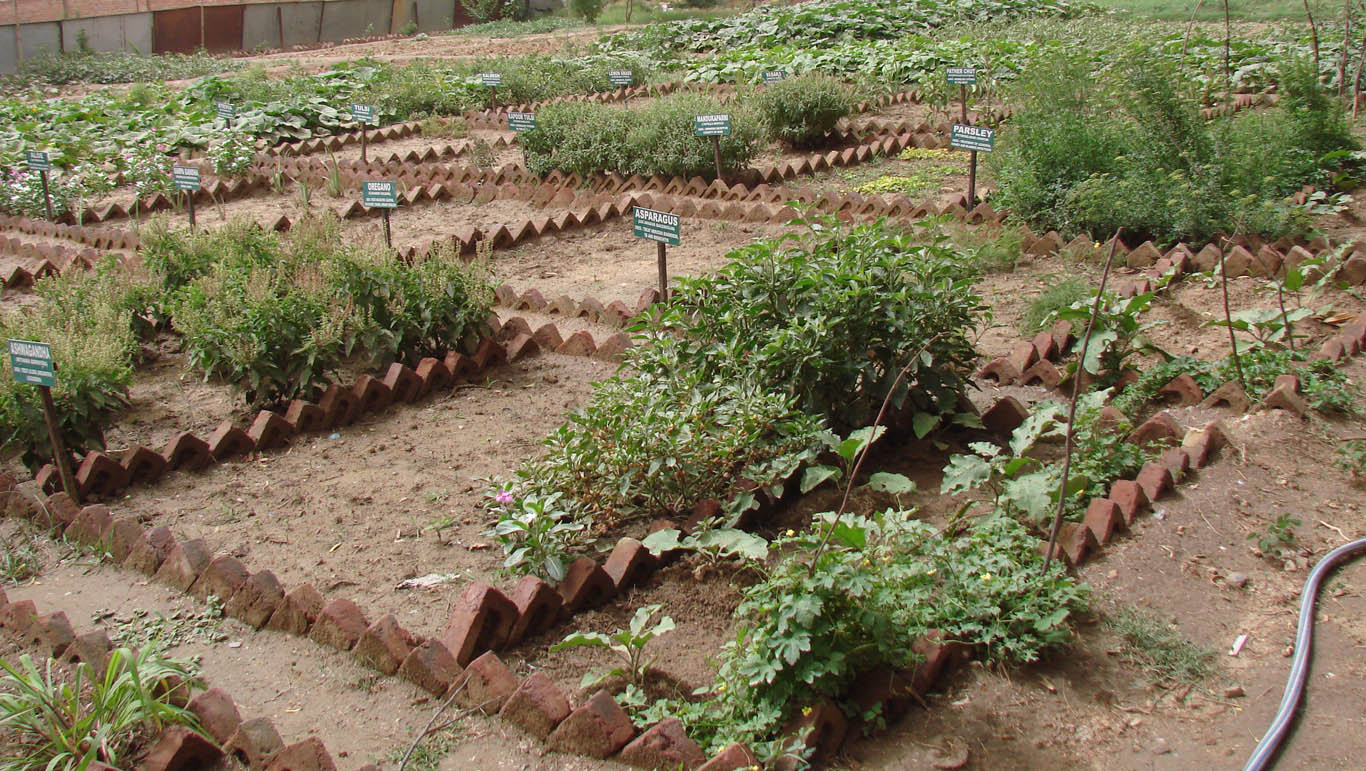
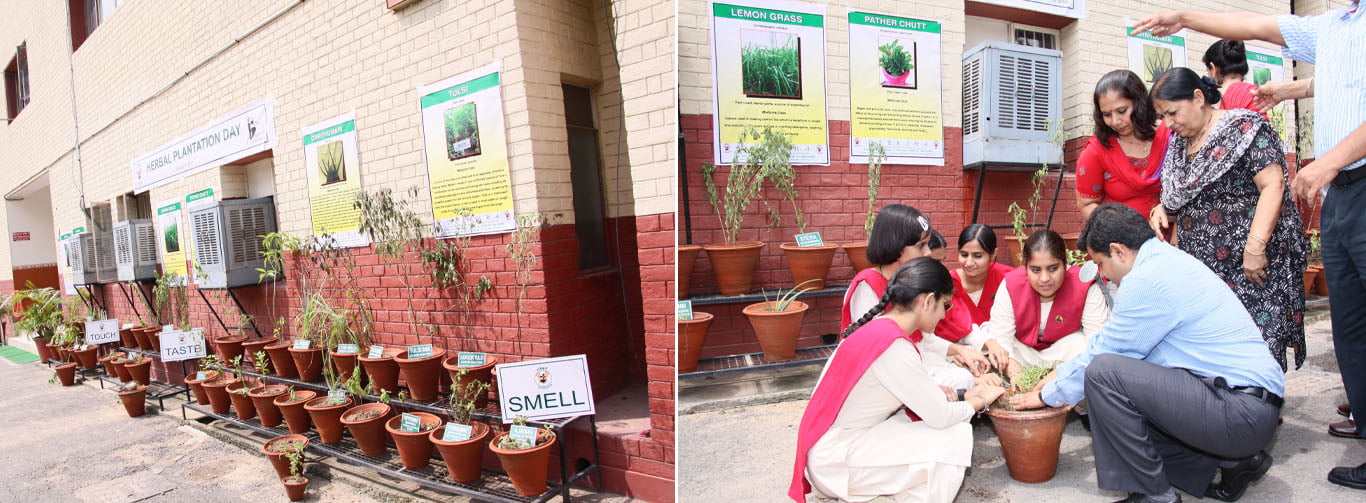
Garden of Three Sense’s at the Institute for the Blind, Sector 26, Chandigarh
DEEKSHA adopted an inclusive approach by developing a Garden of Three Sense’s at the institute for the Blind in Chandigarh. As the visually challenged children could not see the herbal plants and make use of them, we developed an innovative methodology in which the herbal plants were segregated into three categories by which they could be identified:
- Touch
- Smell
- Taste
By this way, the visually challenged children were able to first learn the identification of and then make usage of the herbal plants.
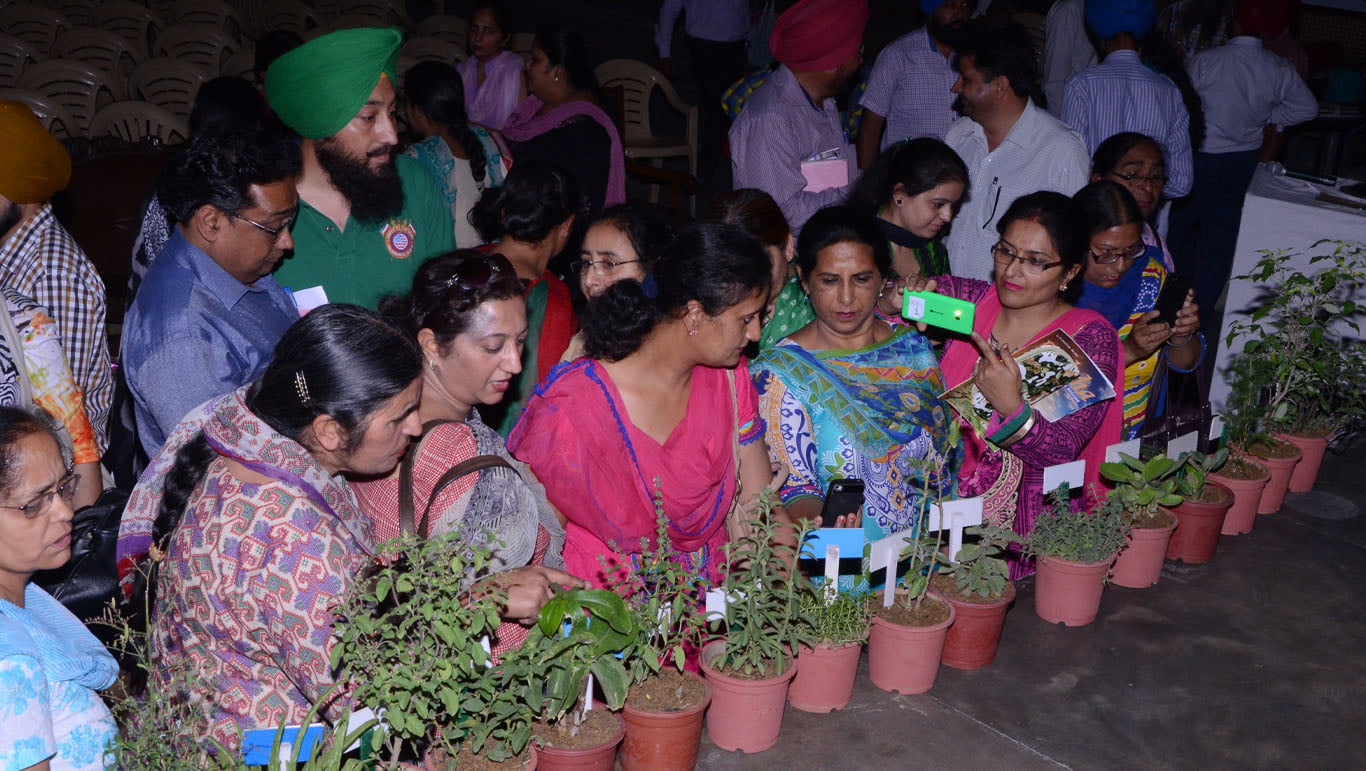
Workshops For Educationists
If you want to bring about a change – start from the educationists for it is them who can shape the destiny of the world. Keeping this in mind and In order to propagate the usage of herbal plants, a major training workshop was organised by DEEKSHA for the teachers of various schools and colleges of Punjab at Mohali supported by Punjab Education Board. During this workshop all the participants were given exposure to the uses of herbal plants. All the participants were made aware about the uses of various herbal plants and how their regular usage can keep a lot of health challenges away.
Herbal with Pantaloons
During one of the novel initiatives along with Pantaloons India, Volunteers of DEEKSHA interacted with and sensitized the shoppers who visited the Pantaloons store at Elante Mall, Chandigarh about environmental issues related to herbalism, conserving tree cover, and waste management which impact our lives. An interactive quiz was also organized involving the shoppers while they shopped. Over 150 herbal plants were also distributed to the shoppers who shopped at the outlet and were made aware of their usage. The shoppers were pleasantly surprised and showed very high interest in the interaction.


